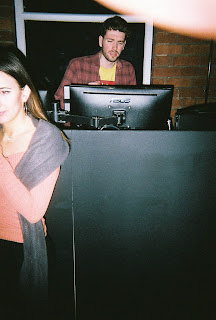To develop professional methods of presentation, I opted for physical presentations, a skill I am growing in and wanting to improve through both LRFS, PPP and the Extended practice moduel. In the 4 months I gave over 30 presentations to designers, brands, hair and make up artists meaning the need to articulate well and think on feet. My difficulty was finding a way to synthesise graphic design with the project management and styling skillsets, but this again emphasised that I am not a graphic designer. Learning from L5, my skills lie around ideation and off-screen processes, including styling planning, although once again documentation is something I need to work on. By talking to lots of people within the creative industries, I presented a powerpoint at the Leeds Fashion Network on the LRFS ideation and concept, as well as the artistic direction for each. This was my first real taste of presenting within the real world, meaning I needed to increase professionally in terms of visuals and layout. Incorporating my graphic design knowledge and practice, I created a visually engaging and aesthetically pleasing presentation, but also being void of text explaining informally the themes as I went, seeing if this technique of presenting information would receive a better response than a formal talk. This method was appropriate due to the audience being relatively low-key, like-minded individuals based in the Leeds area, keen to get involved with Fashion in Leeds and collaboration - or else they would not be in attendance.
By doing pitches to brands and retailers trying to secure garments to use within the fashion show styling, I incorporated the promotional content and LRFS house design identity created by Saul Studio, aligning myself as a professional representative of LRFS and also maintaining visual consistency across all platforms.
However, the ability to be innovative was often needed through resolving many issues, for example, many of the models in Scene 3 Peace could clearly not walk too well in heels, so to solve this problem I altered the styling meaning that footwear would be concealed, meaning they could walk bare foot if needed. To facilitate this I had to work on re-working the choreography and music, creating a slower pace for the scene within the show but also backing up the concept of peaceful runnings and wheat fields. Analysing information and experience from LRFS there are many things I would have done differently including not dedicating my life to the running of the show and co-ordinating of people not contributing much themselves. Looking back, I regret not incorporating subtle symbolism through accessories within the looks and documenting my ideation process better. I have found mood boards a quick, informative and aesthetic way to present work professionally, especially in this context of the fashion industry. The problems encountered were not design challenges, yet despite this I do think I’ve grown as both as designer and professional due to the sheer amount of things I needed to consider. If a model dropped out of a shoot, or it was postponed, or the images did not come out like planned, reshooting or delays would result in a halt to the graphic design process possible by Saul Studios and advertising from the marketing department and thus going into the world much later than planned. This taught me how to manage my own time effectively, and the time of others. Due to the hectic nature of event planning/management, my diary allowed me to keep on top of my ‘to-do’s’ which was then developed to using Toggle after discussing productivity with Alec Dudson, so a mixture of the productivity app and reminder alerts helped keep me and the whole team on track over the lengthy working process, in order to create a show and produce all the marketing content. The creative freedom of this brief was also difficult as it was not fully mine, yet this allowed me to observe it in a different way, creating alternative points of view on the directors curation. Working closely with them, the show was executed with efficiency and on-schedule resulting in positive client/workplace feedback from the directors and Imogen, the RAG Co-ordinator herself.

















No comments:
Post a Comment